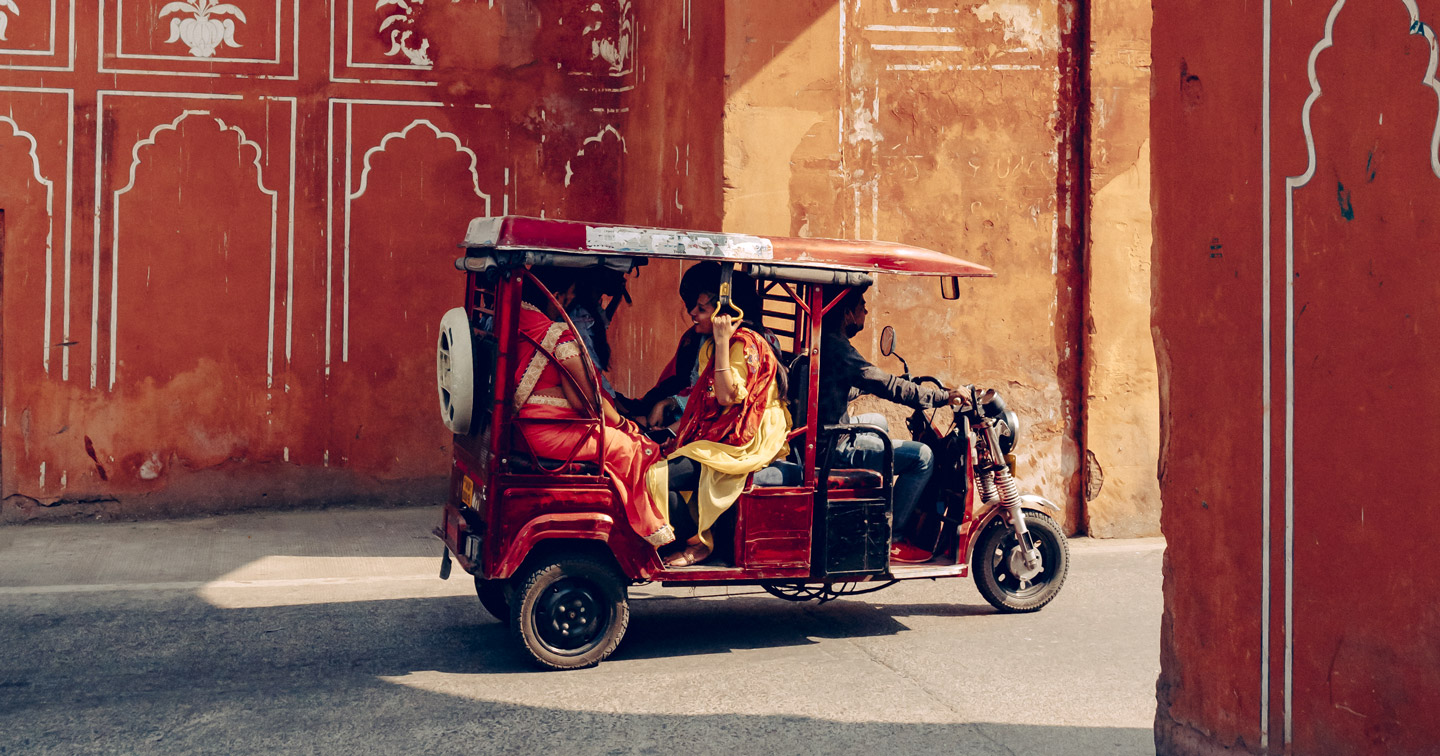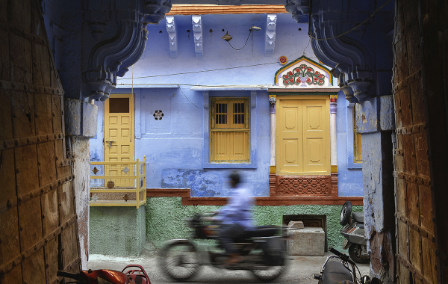Published 16th Feb. 2023
Reading time
Mumbai is known by many names. Formerly called Bombay, the city was referred to as Kakamuchee and Galajunkja prior to the Middle Ages. More recent monikers (and affectionate nicknames) include the ‘City of Dreams’, the ‘Hollywood of India’, the ‘City of Seven Islands’ and the ‘Gateway of India’. The former two are nods to Mumbai’s role as the main centre of India’s booming Bollywood film industry, while the latter are references to its position across an archipelago, and its reputation as a booming financial hub. A city as energetic and sprawling as Mumbai would be challenging to confine to one phrase, and as well as being polyonymous, the city is a jack-of-all-trades when it comes to activities. From wandering through kaleidoscopic spice markets and gazing at ornately carved buildings, to visiting ancient UNESCO-recognised archaeological remains, the list of things to do in Mumbai far exceeds its collection of titles. Read on for our travel experts’ selection of the best, which can all be incorporated into your India holiday.
Situated at Mumbai’s harbour, the ornate Gateway of India is South Mumbai’s crowning masterpiece and one of the city’s most visited monuments. The 85ft-high commemorative arch was built in honour of King George V and Queen Mary, and to Mumbaikars, the Gateway represents much more than just an intricate example of Indo-Saracenic architecture. It has become a place to meet, dance and ply a variety of wares, complete with a colourful collection of vendors and some eclectic street performers. Another excellent way to see the monumental structure is from the water, and chartering a small sailing boat is one of the best things to do in Mumbai to steer clear of the hustle and bustle of the crowds. Set sail at sunset to see the yellow basalt monument glowing amber in the diminishing sunlight.
Sail northeast from the Gateway of India and you’ll reach Elephanta Island, locally known as Gharapuri Island. It was dubbed Elephanta by the Portuguese, in recognition of a large stone elephant which once stood near the shoreline. Today, the island is best-known for its maze of rock-cut cave temples, which are thought to date back to between AD 450 and 750. Identified as a site of ‘Outstanding Universal Value’ by UNESCO, the caves represent some of the subcontinent’s most impressive carvings, with the rock art linked to the cult of Shiva. Other archaeological remains dotted across the island reveal evidence of occupation here as early as the 2nd century BC. Explore the main Shiva-dedicated temple and wander through its labyrinthine latticework of courtyards, pillars and shrines to reach the striking 22ft-tall carving featuring the Sadashva (the three faces of Shiva).
There’s no denying that Mumbai is a feast for the senses. Densely populated and teeming with life, the city is renowned for its bustling streets and, at times, chaotic atmosphere. This is part of its charm, yet if you’re after a slice of serenity within this vibrant metropolis, Sanjay Gandhi National Park offers a natural sanctuary. The protected bioreserve is filled with flora (including bamboo and evergreens), fauna (such as spotted deer, Indian flying foxes and four horned antelopes) and birdlife (namely paradise flycatchers, sunbirds and brown-headed barbets). Sprawling across 65 miles of Mumbai’s north, you can explore the expanse on foot along one of its many trekking trails or hop aboard the park’s toy train for a scenic ride through the rich forest.
Another one for nature lovers on our list of things to do in Mumbai: the Hanging Gardens of Mumbai are found perched on the western side of Malabar Hill and act as a source of solace for locals. The gardens were created in 1881 and are dedicated to Pherozeshah Mehta, a prominent Parsi political leader, activist and lawyer, who served as the President of Bombay Municipality a number of times. Among the emerald vegetation and animal-shaped hedges, you’ll find a flower clock at its centre as well as the ‘Boot House’, a wacky boot-shaped structure painted in shades of red and blue. The hilltop location also boasts snap-worthy panoramas across the Arabian Sea and visitors often flock here to watch the sun sinking beneath Mumbai’s skyline.
Found at the heart of Mumbai, Chhatrapati Shivaji Terminus is one of the city’s most iconic landmarks (and arguably the most impressive train station in India). Now a UNESCO World Heritage Site, the terminal took ten years to build, with construction beginning in 1878. While the station is notable for its vast size, it’s the Gothic architectural design which makes the building a real eye-catcher. Blending a fusion of British Victorian style and traditional Indian palace architecture, Chhatrapati Shivaji is made up of striking stone turrets, an eccentrically-decorated central dome and numerous intricately-carved arches. Join the throngs of commuters (around three million a day) and take a train from here, or simply marvel at the magnificent exterior.
Written by Luisa Watts

Our eager experts have explored India from its mountainous north to its tropical south in search of the best destinations, experiences and properties. In-country, our passionate team of Concierges share a love of India and are always on hand to impart extensive knowledge of their country. Working with phenomenal local guides across the country, we tailor experiences to your specific interests, from family-friendly block printing in Jaipur to city food tours and off-the-beaten-track wildlife safaris. Whether you’d rather call a historic palace or a humble guesthouse home, we can offer your dream accommodation while in India.
ENQUIRE NOWPractical advice and inspiration for your next trip

Searching for the best safaris in India? We’ve got you covered. Whether you’re keen to track tigers in Madhya Pradesh, admire Asiatic lions in Gujarat or photograph forest eagle owls in Kerala, your India holiday awaits. While Bengal tigers steal the limelight in Bandhavgarh National Park, don’t forget about the shaggy sloth bears (though they’re not as cuddly as they look). Feeling up for the adventure?
15th September 2025 - India Safari & Wildlife

With their sleek, tangerine-tinged coats, piercing eyes and commanding presence, nothing beats the thrill of seeing a tiger in the wild. And where better than in India, home to the largest population on Earth? But when it comes to the best time to see tigers in India, it all depends on what you want from your trip. Whether you’d rather vivid green landscapes or crowd-free safaris, we’ve got the insider intel on when to see India’s famous big cats.
23rd June 2025 - India Safari & Wildlife

India has long been a favourite destination here at Original Travel. It's the kind of country that inspires a lifelong affinity; travellers become hooked on the kaleidoscope of colour, energy and spirituality that pulsates throughout the nation. From India’s remarkable landscapes and diverse cities to its thriving wildlife and creative cuisine, there’s always more to explore. Keen to discover more reasons to visit India?
25th May 2025 - India Travel Inspiration

Our team of destination experts will get to know you and your unique requirements for your holiday

We work with you to build an ultra-personalised holiday itinerary with your choice of accommodation, experiences and activities

All of our holidays include little extras designed to make a big difference to your trip, from fast-tracking you through airport check-in and security to our network of local Concierges